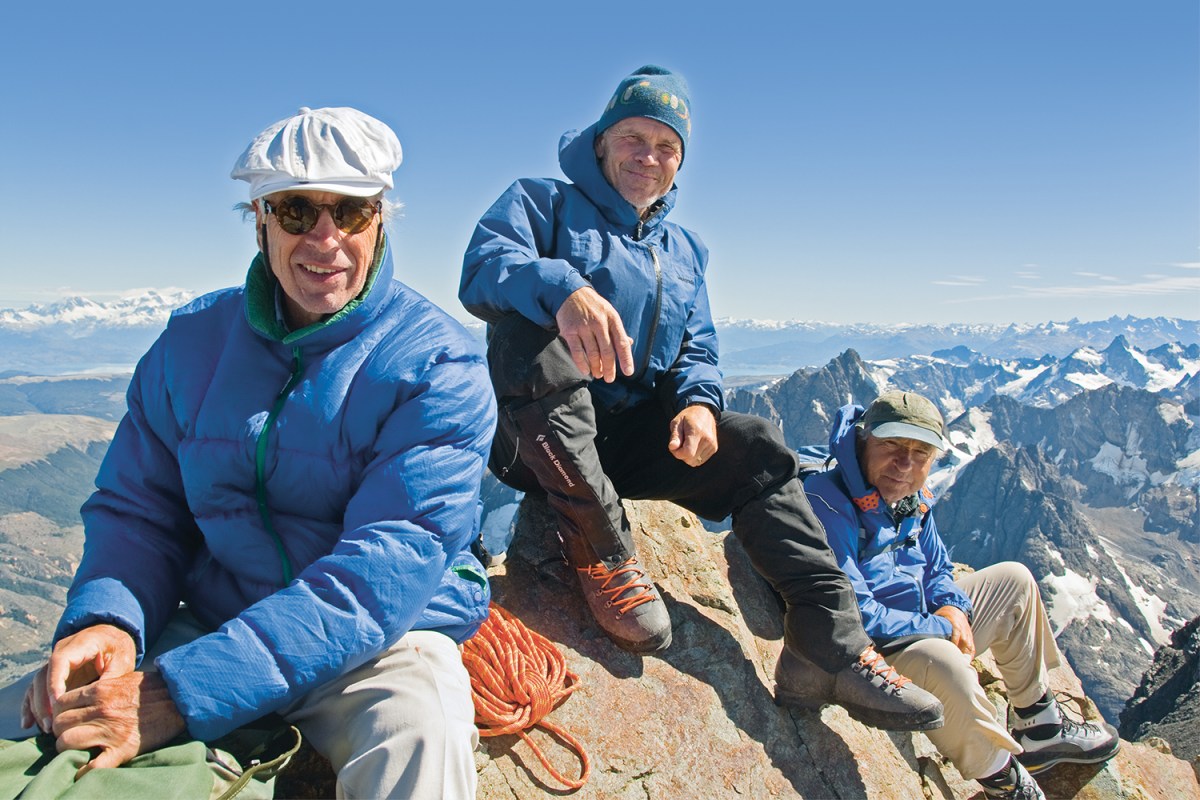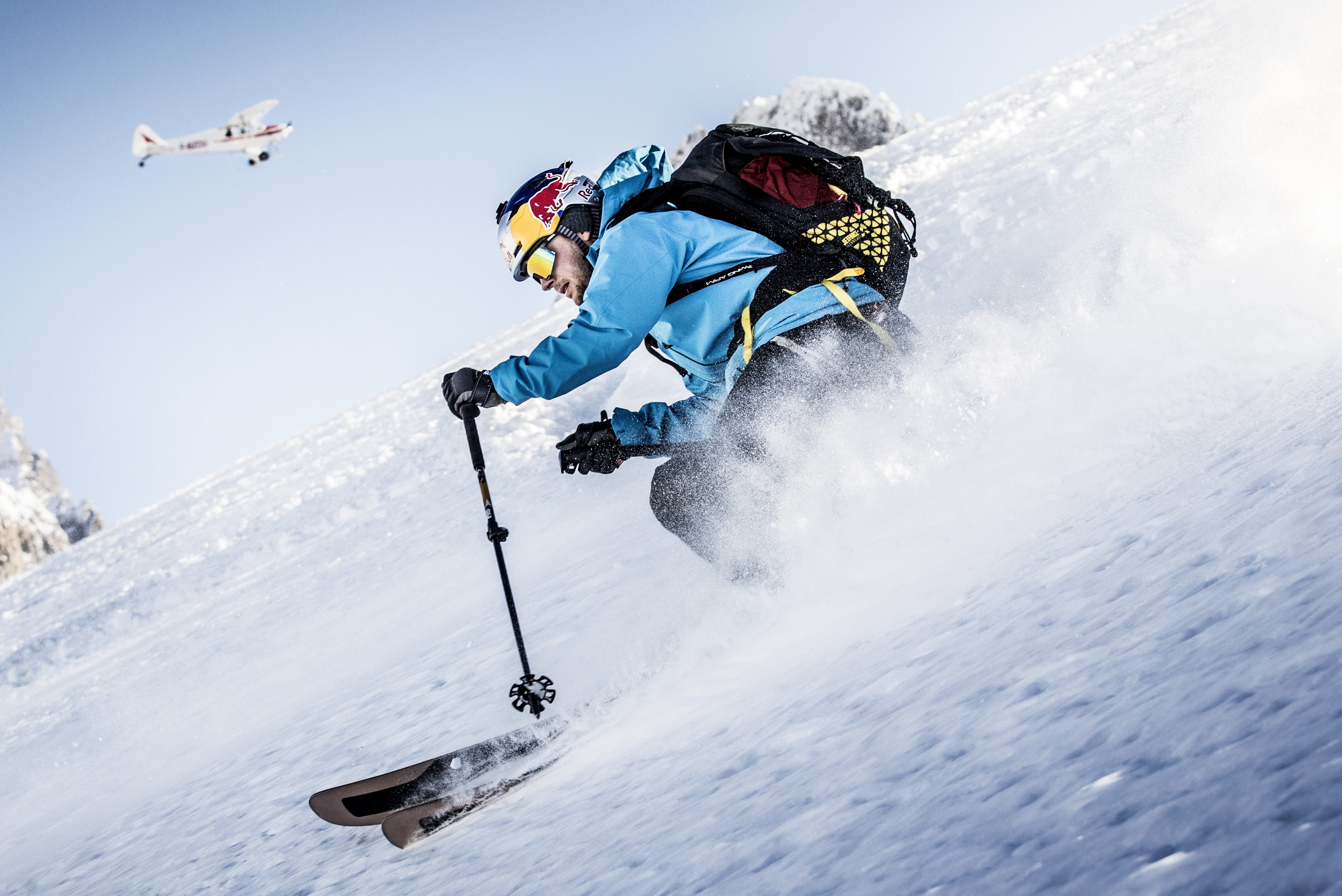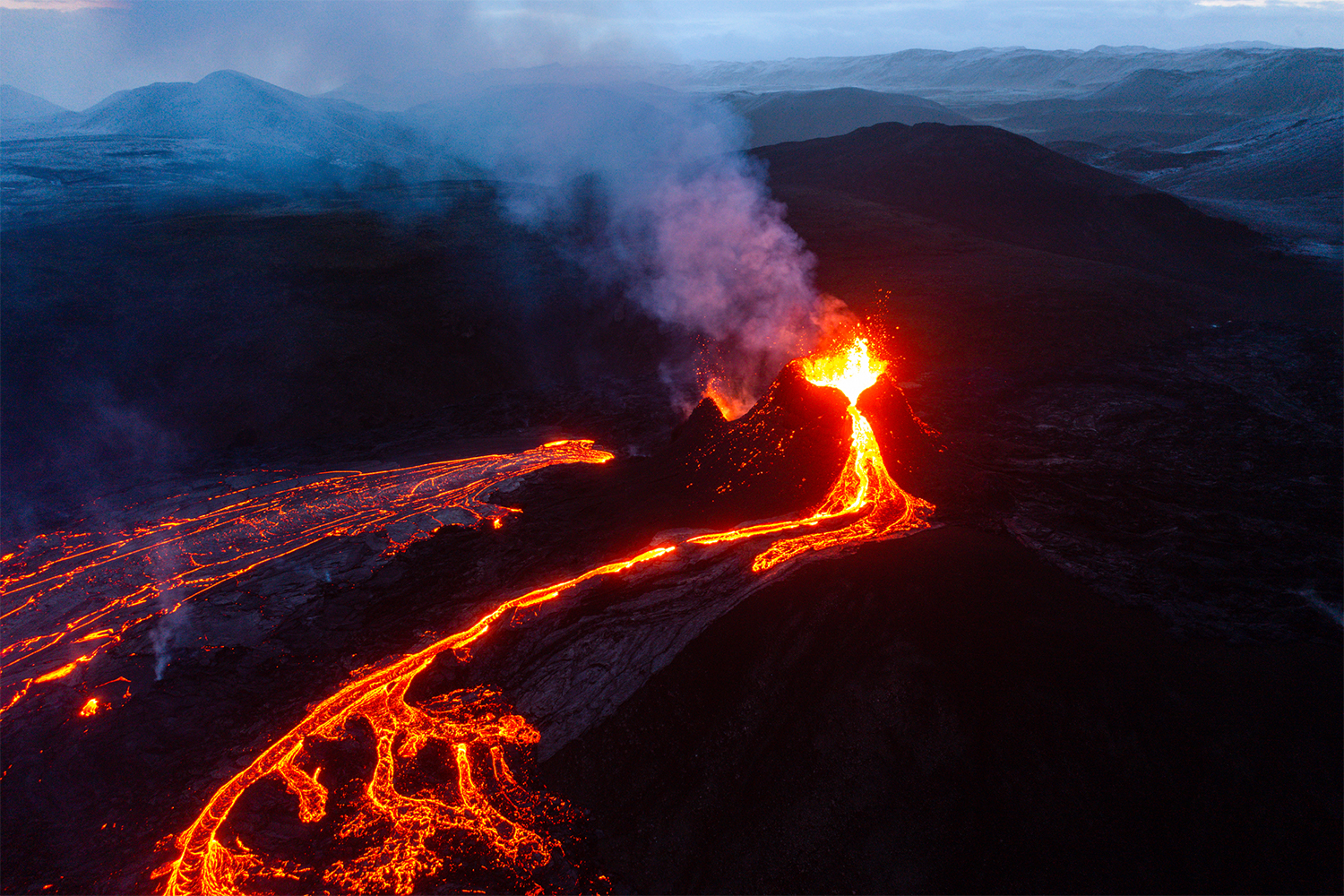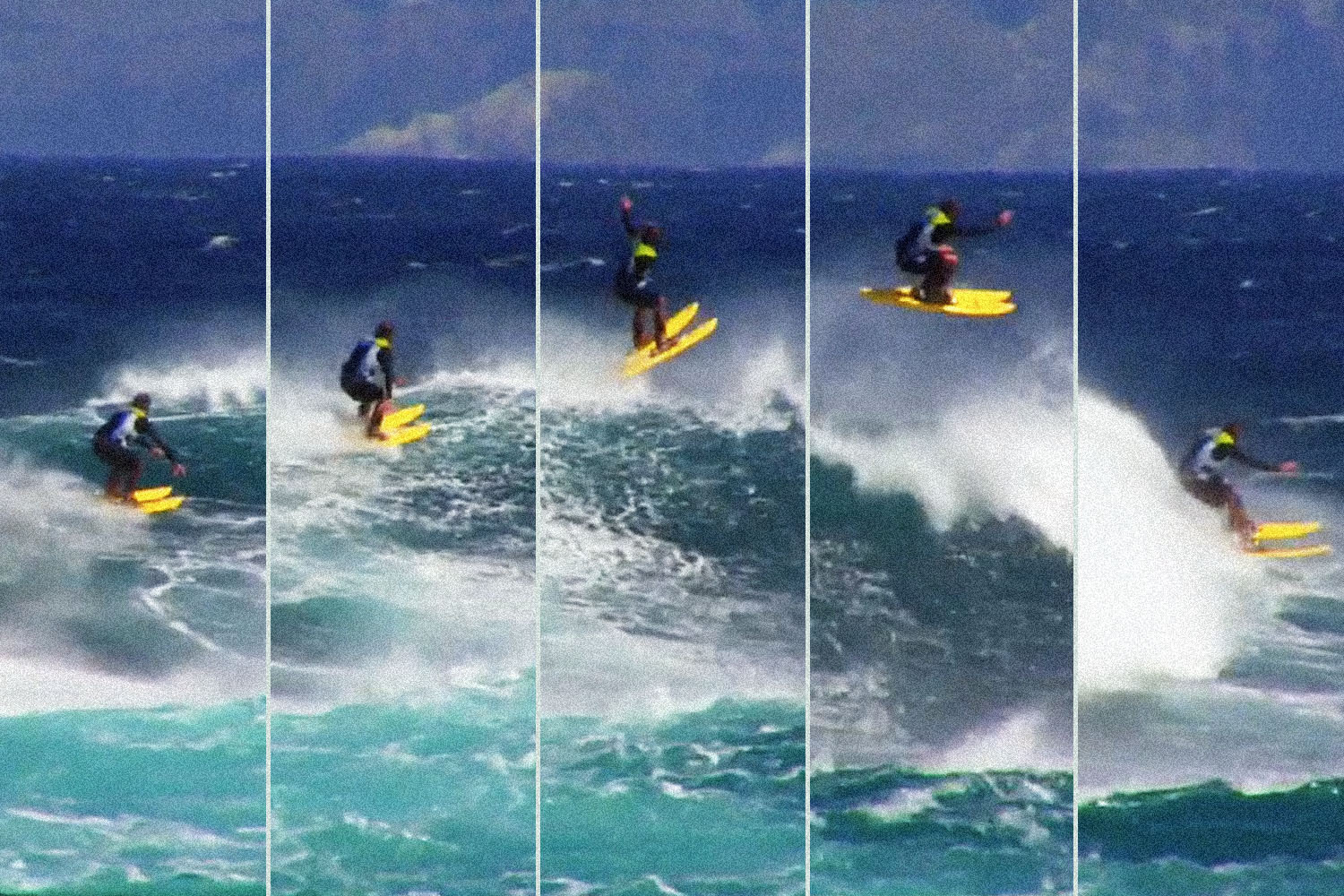One of the first photos in the new book Life Lived Wild is taken by Jimmy Chin, the climber and Oscar-winning director of Free Solo and the new film The Rescue. One of the people in the photo is Conrad Anker, one of the most famous mountaineers of our time. The next photo features Yvon Chouinard, the lionized founder of Patagonia, and the late Doug Tompkins, co-founder of The North Face.
This is a preview of what’s in store in Life Lived Wild: Adventures at the Edge of the Map: a cast of characters that together make up some of the biggest names in the modern era of adventuring — from Jim Whittaker, the first American to summit Everest, to Frank Wells and Richard Bass, the businessmen who kicked off the Seven Summits challenge — traveling the globe, pushing the limits of outdoor sport, risking their lives, and some of them even losing their lives. But the person who brings them all together, the person whose life is the one lived wild, is someone you may not have heard of: Rick Ridgeway.
If you do any research on 72-year-old Rick Ridgeway, you’re bound to come across someone calling him “the real Indiana Jones,” a quote taken from the headline of a 1985 feature story in Rolling Stone. In the article, the magazine even tried to make him look as close to Harrison Ford as possible; it opens with a shot of Ridgeway wearing a trendy pink shirt and short blue shorts using his climbing gear to scale a palm tree. Shot from below, his legs look tan and muscled, and he’s got a great head of hair.
In real life, Ridgeway is five-foot-five and admits to not being overly concerned with fashion (he once arrived at a Today show interview in an aloha shirt and flip flops). But I can promise you this, his 25-chapter story is more gripping than The Last Crusade, and better inspiration for living out your own Indiana Jones escapades than the Hollywood character.
From an Everest “Military Assault” to Near-Death in Borneo
“The most important thing that I hope I expressed in the book was just the joy that comes from increased awareness about the magic of the wild and natural world,” Ridgeway tells InsideHook, “and what you can learn from it if you learn to pay attention and you spend a lot of your time in nature, and in wild nature.”
When he says “wild nature,” Ridgeway knows what he’s talking about. He’s from a time before $100,000 guided trips up Everest for unseasoned climbers — a phenomenon he decries in the book — a time beginning when the old ways of mountain conquering were still in effect.
“The expeditions I went on in the mid ’70s and the early ‘80s were the last of the old-school expeditions in the British style of being more of a military assault, or having the attributes of a military assault,” he says. When Ridgeway first climbed Everest, in 1976 as part of the American Bicentennial Everest Expedition, he says his troop was massive — 12 climbers, 44 Sherpas and over 600 porters — and that they started with a 170-mile trek to Base Camp that took a month.
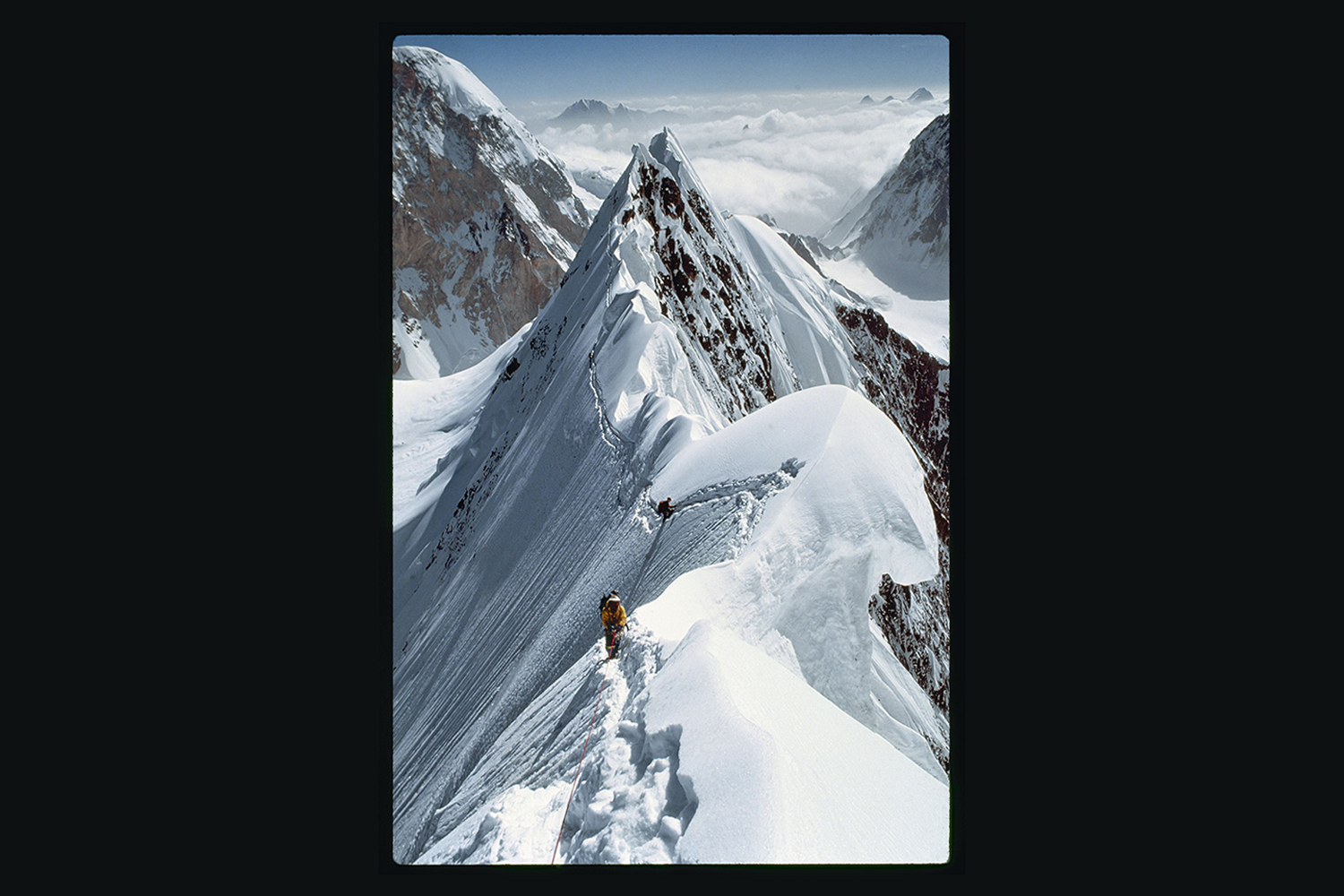
This is just one of many stories that feel ripped from the script of an epic adventure movie.
There’s the time he was one of the first to summit K2, a mountain more dangerous than Everest, without oxygen; the time he spent a month in a prison in Panama after a plot to trade 50,000 rounds of ammo for emeralds went wrong; the first coast-to-coast crossing of Borneo, the largest island in Asia and third-largest in the world, that included a moonshine-fueled rager with the indigenous Dayak people and ended with him on the edge of death in the middle of the wilderness; and the time he flew in a ski-equipped propeller plane to Antarctica to climb the continent’s tallest mountain, Vinson Massif, in what he himself called in the Rolling Stone story “a classic Raiders of the Lost Ark adventure.”
Ridgeway isn’t the first to detail a life of exploring the wild, dangerous and uninhabited places of the world, and he won’t be the last. Sharing these stories — and don’t forget the breathtaking photos worthy of a place on your wall — is how the next generation of adventurers gets inspired. (He was galvanized when he saw a photo of Jim Whittaker on the summit of Everest on a National Geographic cover.)
For the rest of us, those who usually soak up a vicarious thrill from these types of stories and then move on with our safe, normal-altitude lives, it’s not necessarily these death-defying feats that make Ridgeway’s book inspiring; it’s the casualness of his travels, the comfort with which he seems to go from country to country, and the ease with which he writes of his often harrowing experiences. After reading Life Lived Wild, you get the sense that little old you could do the same thing, or at least something similar.
“I encourage everybody who thinks that they’re never going to be able to have that kind of [adventurous] life to just change your mind and say, ‘Yes, I am going to have that kind of life, because I am going to make that a priority in my life,’” Ridgeway says. “All of us can do it, yet I’m astounded by how many people I see who don’t do that.”
In his mind, that’s the key for most people: readjusting their priorities. It’s not necessarily the case that people are too busy to climb a mountain, kayak a river or waterski in Antarctica (as Ridgeway has done). It’s that many people don’t see these exploits as essential parts of the human experience.
“It’s so easy to deprioritize against the other things that you’ve got in your life — getting outside, going on an adventure, or just spending time in nature and in wildness,” he says. “But then if you think through what those experiences in nature and wildness — whether you’re doing an adventure sport, or just out there in it — what they offer you, and what you learn from them, and what you can gain from them, when you think that through, it’s maybe a little easier to prioritize them so that you do get out.”
Case in point: News anchor Tom Brokaw, the picture of a career-oriented man, shows up multiple times in the book as a pupil of Ridgeway and Chouinard’s, learning the ropes, quite literally, of climbing. If Brokaw can make time, not just paying for a top-dollar guided expedition but actually immersing himself in the outdoors, then why not you?
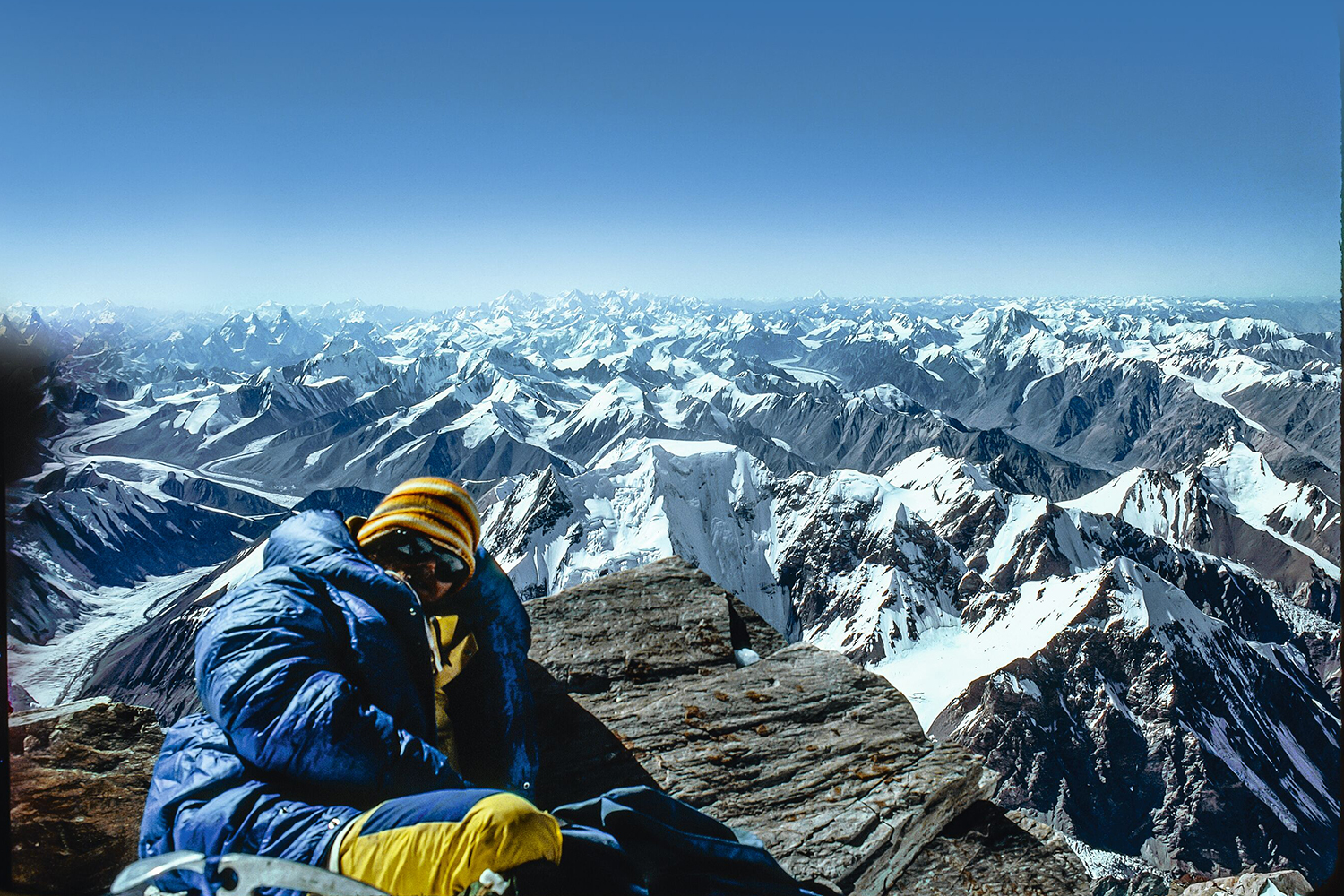
How to Live Life the Rick Ridgeway Way
It can seem daunting to enter the world of outdoor adventure sports after a certain age, especially when reading about people like Ridgeway, who made his first Everest attempt before the age of 30. But experience and the skills that come with it aren’t necessarily the most important factor in these endeavors.
Ridgeway recounts a moment from the month-long trek he, Jimmy Chin, Conrad Anker and Galen Rowell completed in Tibet, each hauling 250-pound carts across the uninhabited Chang Tang Plateau at an average elevation of 16,000 feet. Chin was 29 at the time, the youngest on the team by 10 years, but he had a “glass half full” mentality. It served him well when his cart flipped while trying to haul it over a boulder, simultaneously driving Chin’s head straight into the rocks.
“I helped him up, and I could see a blood stain growing on his back through his shirt … and where most people that you could probably think of who you’d go out on a trip with would be cursing the cart and cursing the rock, he just had this bemused grin on his face. Still kind of half delirious, he said, ‘You never told me that carting was going to be a dangerous contact sport,’” Ridgeway remembers, chuckling. Not only does a positive attitude like that foster camaraderie, making people actually want to travel with you in the future, he says, but it also helps develop a kind of mental strength.
“And look what happened to Jimmy after that trip,” he says, “he just became a rockstar in adventure, and in filmmaking.”
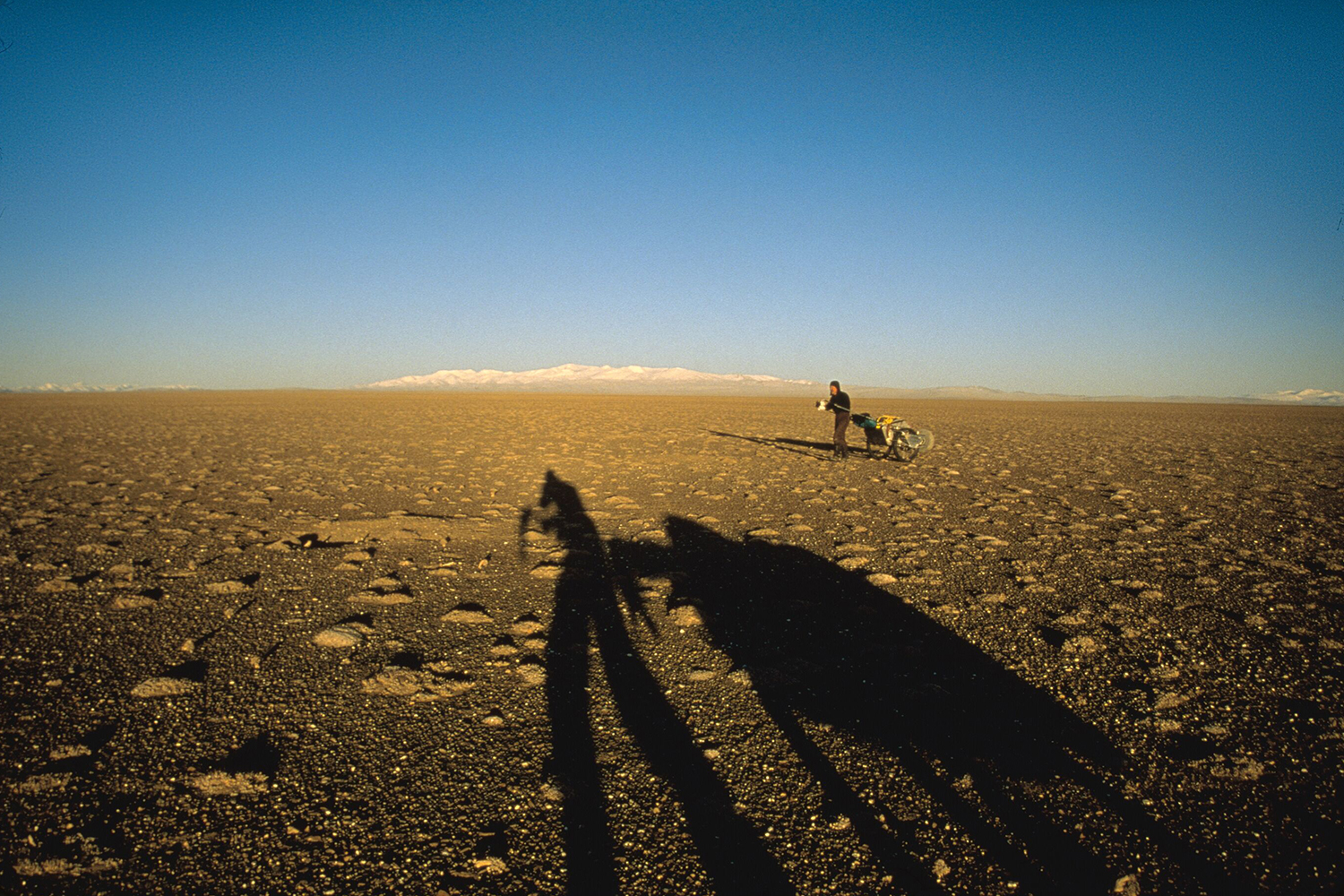
If Chin is a globetrotting rockstar of this generation, Ridgeway is the bridge between him and the outdoor titans of yesteryear, the Tenzing Norgays, Edmund Hillarys and Jim Whittakers. When I casually mention this, that the next generation of climbers looks up to him, he goes out of his way to say that’s not the case. “They’re following their own footsteps,” he says. Even after decades of going where few (and sometimes no) men have gone before, he’s humble. Another quality newcomers would do well to mirror.
So how does the self-effacing Ridgeway feel about his inescapable title, “the real Indiana Jones”? While he doesn’t think of himself that way at all, he says he’ll accept the moniker “if the real Indiana Jones is not a character, but somebody who wants to go out into the wild part of the world and have a life of adventure for some of the reasons that I hope I’ve expressed in my book.”
That’s not to say he hasn’t got a kick out of the nickname at various points in his life, including the time he met Harrison Ford.
“Several years ago I was a guest speaker at this conference, some kind of environmental conference, and Harrison was there as a speaker as well. He is on the board of Conservation International, so he was speaking about his role there,” he says. “I was standing in the lobby talking to him, catching up, and this guy comes over, comes right up to the two of us, and he goes, ‘Oh look, it’s the real Indiana Jones talking to the pretend Indiana Jones!’”
“Harrison was not amused,” Ridgeway says, breaking into laughter.
The Charge will help you move better, think clearer and stay in the game longer. Subscribe to our wellness newsletter today.
